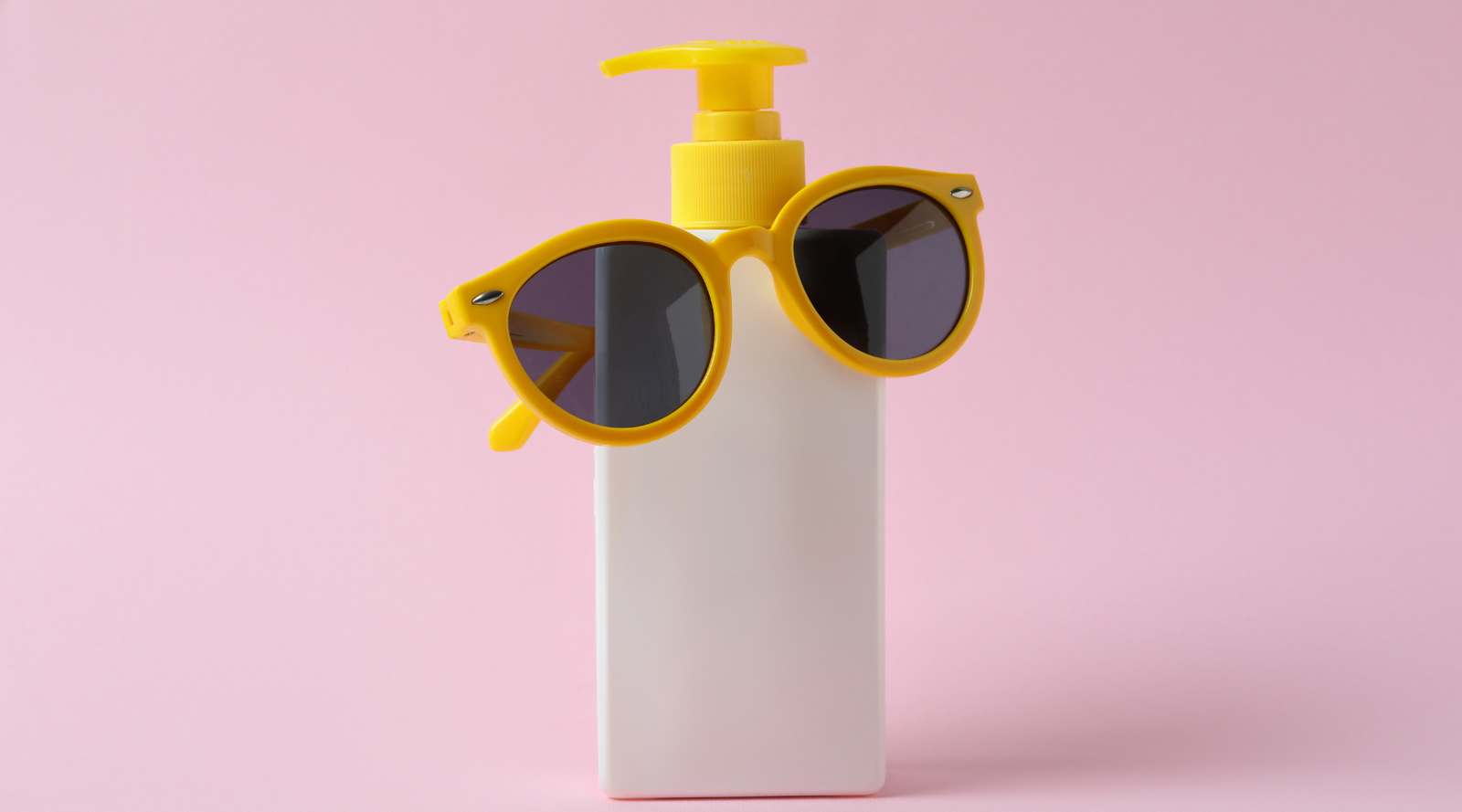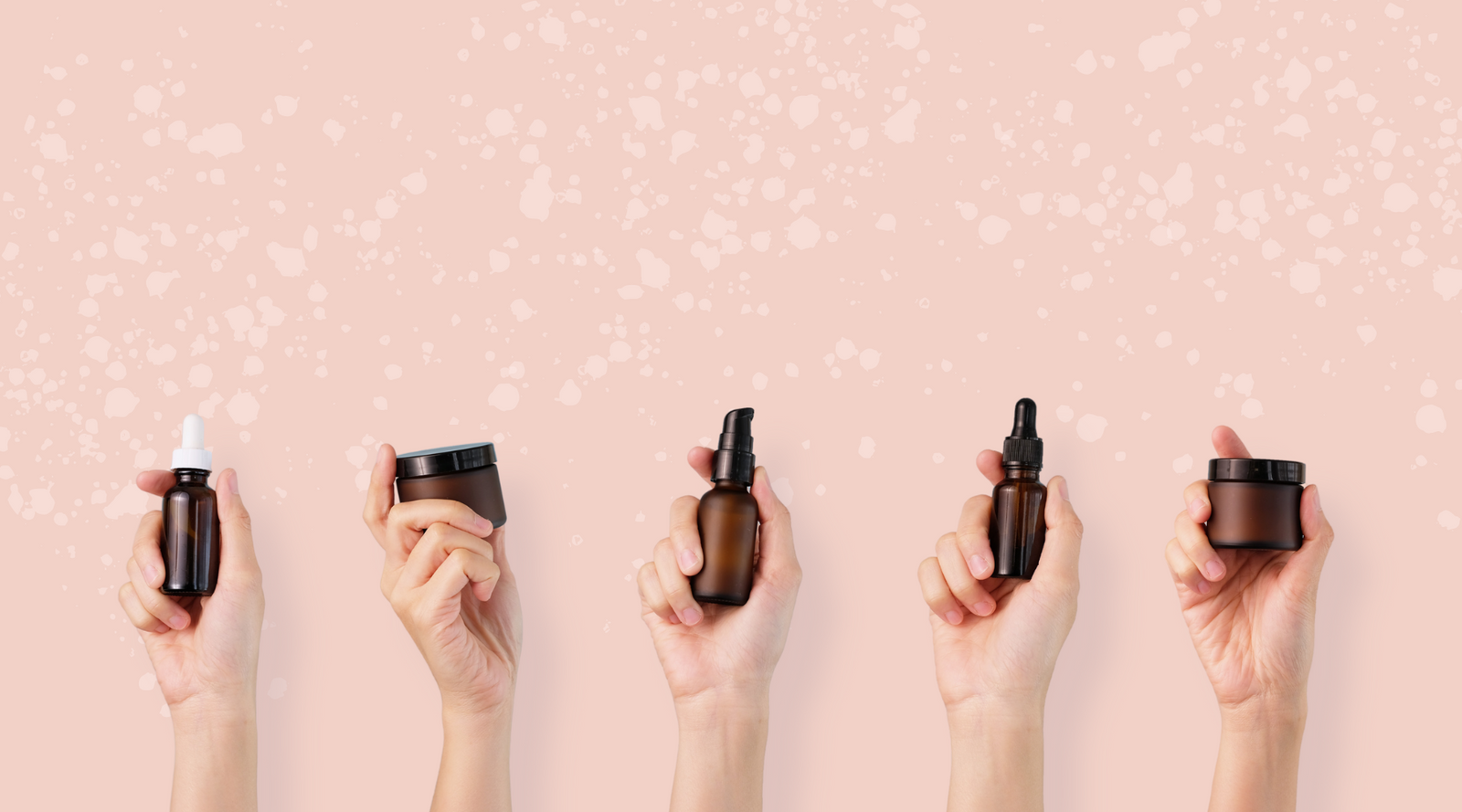Anti-Aging's #1 Rule = Sun Protection
Most of us have grown up with the habit of applying sunscreen when we plan to be outside for long periods, like at the beach, on hikes, or on days by the pool. Many can speak about what an awful sunburn feels like and even the visible damage you can see it doing to your skin when we don't reapply or forget it completely, but we don't always think about what damage is happening daily when we are not using the proper sun protection. Let's get down to the important details to make sure you are making the right choices to protect your skin from our enemy and friend- The Sun.
If your headlights are off, the sun is still on.
No matter how many clouds are in the sky, the sun is still shining above them. Meaning those skin-damaging rays are sneaking through and leaving their mark on your precious skin! In places like Arizona, we see the sun far more days than not, so it is an easy reminder for us to make sure we are protecting ourselves, but not everywhere is like that, so making sun protection a habit no matter where you are is important. Even if you are just driving to work and not spending large amounts of time outside, your skin is being affected. If UV rays can still sneak through the clouds, they can sneak through your car windows!
The Basics:
UVA vs UVB Rays
This is likely not the first time you have heard of these, but let us just have a little refresh. UV (ultra-violet) rays are the most skin-damaging rays that come from the sun. UVA and UVB are the ones that we are the most familiar with.
UVB is the one we think of most since this is the culprit behind those sunburns we try to avoid. Think of the B as 'burn' or even 'bad' since these rays are also the leading cause of skin cancer, including malignant melanoma. This doesn't mean UVA is guilty of course.
UVA rays play their part in forming skin cancer cells as well as taking the leading role in premature aging. So you can think of the A as 'aging'. Burning and Aging... only a good duo for candles and wine in my opinion. There are around 500 more UVA rays than UVB, and they penetrate your skin on a much deeper level, so making sure you are protected against BOTH is very important, especially from an anti-aging perspective. Make sure you are picking the best protection!
Sunblock vs Sunscreen... There's a Difference?
Most people use these words interchangeably, but down in the true details, they are different. You make know them by different names. They both help protect you from UV rays, they just do it in different ways.
Sunscreen (Chemical Sunscreen)
Another word trick to help you remember this one- Think of it as a screen door. Just like a screen door doesn't stop the wind or dust from coming in, sunscreen doesn't stop the sun from penetrating your skin completely. It lets some of the rays in, which is why you may see a bit of a tan forming with longer sun exposure unless using one that is broad spectrum. As the rays penetrate the skin, the ingredients cause a chemical reaction, that then turns those rays into heat that gets released from the skin. Chemical sunscreens generally protect you from UVB rays much more than UVA, making sunburns less likely but those aging rays can still leave their mark. This is the most commonly used sun protection which is found in most supermarkets and pharmacies.
Ingredients
You will likely find active ingredients such as oxybenzone or avobenzone in some of these products. Few may be allergic to certain ingredients found in chemical sunscreens, so they are likely to choose a physical sunscreen instead, especially for their face. I would like to remind you to be cautious about certain ingredients in chemical sunscreens. Over the last few years, we have become more aware of certain ingredients and brands that have been deemed unsafe. Be sure to do your research if you feel that chemical sunscreens are the better option for you. Websites such as EWG's Guide to Sunscreens help you find out what could be harmful and what other options you have.
Sunblock (Physical Sunscreen)
If you are looking to block the most amount of UV rays, this is your best option. The active ingredients in physical sunscreens reflect the rays off your skin, so there is no UV penetration. These are also best for those with sensitive skin and are less likely to contain added fillers and fragrances.
Ingredients
Physical sunscreens also known as mineral sunscreens, contain titanium dioxide or zinc oxide as their active ingredients. Sunscreens will usually be thinner while sunblocks are thicker. Most people think of lifeguards with a big white stripe across their noses when they think of these ingredients, but there are many products that are much more blendable and easier to wear. Our favorite mineral sunscreen is EltaMD.
SPF- What the numbers mean
SPF stands for sun protection factor. There is always a bit of confusion about what the number next to SPF means. Some think it's the number of minutes you can be outside without getting burned while others think it's the overall strength of the sunscreen. It's a little more complicated than that, but we will try and keep it simple.
It's good to know that the higher the SPF the better the protection, IF used and reapplied correctly. Best practices include reapplying after 2 hours, or after sweating or swimming. You want to keep a good amount on your skin as often as possible for maximum protection. It is also important to know that SPF only measures protection from UVB rays unless it is labeled broad spectrum, and choosing an SPF over 50 likely won't do too much more for you, so SPF 100+ might not be the best bang for your buck.
Want to know the best SPF to use for your outdoor adventure of the day? Keep an eye on the daily UV index and the higher the number the higher the SPF should be!
Being outside and enjoying the sun is a wonderful part of life. Just make sure you are doing it the safe way. Wear protective clothing, sunglasses, and hats. Make sure you wear and reapply your sunblock or sunscreen, and if your skin starts to feel hot, take it as a sign that you could be getting a sunburn.
& Get to know the products and ingredients you are using on your skin!
Xo, Christy














Leave a comment (all fields required)